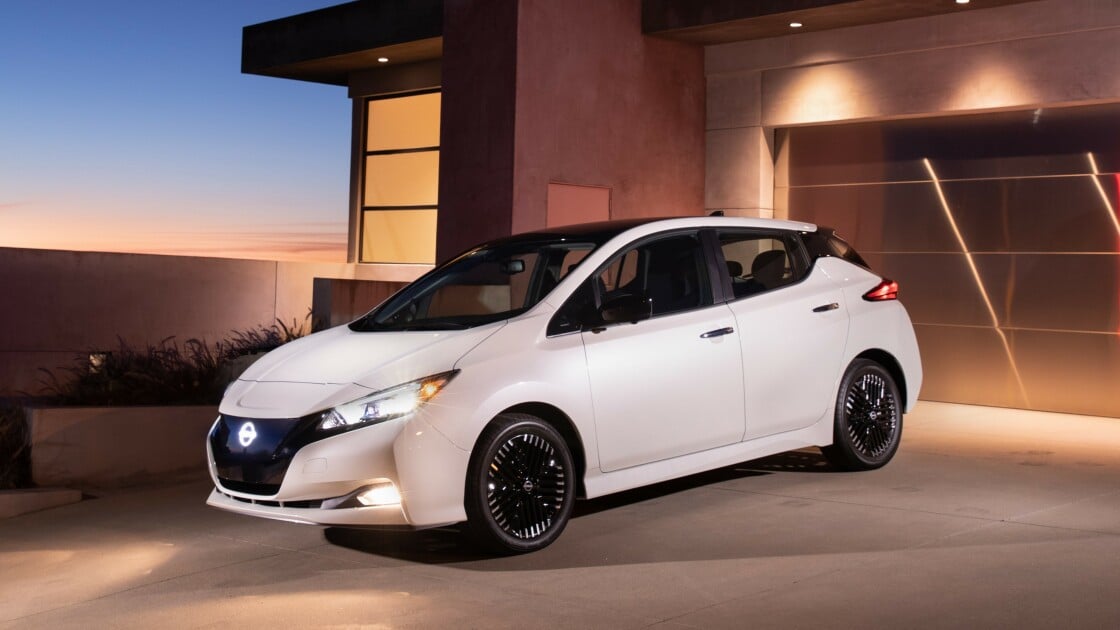The 2024 Nissan Leaf will be slightly more expensive despite not updating its two biggest problems: a dismal, 149-mile range; and outdated CHAdeMO charging port.
The Leaf is the only mainstream EV on the market today with a CHAdeMO port—legacy hardware that was once standard on Japanese-made EVs like those from Nissan and Mitsubishi. Most other automakers have adopted Combined Charging System (CCS) ports in recent years, including Nissan on its new Ariya EV. In the past few months, multiple major automakers have announced a switch to Tesla’s port, the North American Charging Standard (NACS) plug, leaving CHAdeMO even further behind.

CHAdeMO ports will become increasingly rare at public chargers in the coming years. Billions in federal funding earmarked for a national charging network can only go toward chargers that have CCS or NACS ports. Charging companies like Blink or ChargePoint can choose to add a CHAdeMO, but will have little incentive to do so.
The 2024 Leaf has a starting price of $28,140 (up just $100 from 2023), making it the most affordable EV on the market next year. It will also come in an upscale trim, the Leaf SV Plus, which starts at $36,190 (up just $150).
Its main competitor, the Chevy Bolt EV and EUV, which are both a few thousand dollars cheaper, will not return for the 2024 model year. General Motors discontinued the line due to its outdated battery technology as it turns its focus to a new lineup with the improved Ultium battery platform.
But while the 2024 Leaf is affordable, it has one of the lowest ranges: 149 miles on the base model, 212 miles on the SV Plus—both unchanged from the 2023 version (Opens in a new window) .
The 2023 Nissan Ariya has up to 304 miles of range, though it starts at $43,190. Most EVs on the market in the $30,000 price range have around 250 miles of range, like the Chevy Bolt and Hyundai Kona Electric . The Mini Cooper has 114 miles , but its unique styling may make it worth it for urban drivers who don’t need a big battery.
Recommended by Our Editors



Nissan did not update the design on the 2024 Leaf since it was “recently updated for the 2023 model year with a refreshed exterior design, including an enhanced front grille, bumper molding and headlights, plus interior upholstery changes and a new 17-inch wheel design for SV Plus.”
Despite its 40-60kWh battery (depending on trim), the Leaf will take longer than most modern EVs to power up on a fast charger, likely due to its outdated port and technology. The base model takes 40 minutes to get to 80% and 60 minutes for the SV Plus.
While all signs point to Nissan going back to the drawing board on its EV strategy, some budget-conscious drivers may still opt for the Leaf, especially if they’re only using it to do errands around town and charge at home overnight . Although, as EVs become more widely adopted, this niche group of buyers may only exist in the legacy market in which the Leaf once thrived.
Get Our Best Stories!
Sign up for What’s New Now to get our top stories delivered to your inbox every morning.
This newsletter may contain advertising, deals, or affiliate links. Subscribing to a newsletter indicates your consent to our Terms of Use and Privacy Policy . You may unsubscribe from the newsletters at any time.

